 Open Access
Open Access
ARTICLE
Design of Semipersistent Resource Allocation in LTE-V Network
1 Department of Sport Management, National Taiwan University of Sport, Taichung City, 40404, Taiwan
2 Department of Computer Science and Information Engineering, National Chi Nan University, Nantou County, 54561, Taiwan
* Corresponding Author: Yi-Ting Mai. Email:
Computer Systems Science and Engineering 2023, 45(1), 131-147. https://doi.org/10.32604/csse.2023.027833
Received 27 January 2022; Accepted 20 April 2022; Issue published 16 August 2022
Abstract
Radio network access technology currently used in 4G/5G is Long Term Evolution-Advanced (LTE-A), which was developed by 3rd Generation Partnership Project (3GPP). Device-to-device (D2D) communication is a technology enabling direct communications among wireless devices without forwarding through an evolved Node B (eNB). Moreover, D2D transmission can support vehicles as a vehicle-to-vehicle (V2V) environment. It is possible to avoid accidents via exchanging movement-related information among vehicles and effectively increase driving safety (and efficiency). However, radio resources are limited in radio networks. A vehicle transmits through D2D in Long Term Evolution-Vehicle (LTE-V) mode-3 standard, and an eNB can allocate the same spectrum radio resources for cellular and V2V links simultaneously. When using the same radio resources, the probability of interference may increase. This study designed a semipersistent resource allocation algorithm based on different cycles in an LTE-V network. Moreover, resource allocation under different cycles was analyzed, and a scheme for resource selection is proposed based on cycle size. The proposed Semi Persistent Gain Aware Resource Allocation (SP-GARA) scheme selects resources based on the expected sum rate of the cycle size and analyzes and discusses the results of the total sum rate at different cycles and speeds for an improved performance.Keywords
With the increasing popularity of wireless mobile devices, people have moved from being restricted by wired networks to accessing networks anytime and anywhere. Therefore, people’s demand for Internet bandwidth is increasing. However, radio resources are limited. When numerous users use a radio network simultaneously, it inevitably leads to congestion, thereby causing a high delay and low network quality. This issue has promoted studies on device-to-device (D2D) communication and resource allocation.
In the field of resource allocation, many studies leverage system snapshots for improved speed. However, resource allocation varies considerably in real scenarios. The basic scheduling proceeds along with Transmission Time Intervals (TTI). With an increasing demand for the network, every TTI allocation imposes a high computing load on the evolved Node B (eNB). Therefore, this study investigates a method to effectively allocate resources to reduce burden on the eNB. Long Term Evolution-Advanced (LTE-A) [1,2] can support D2D for vehicles as Long Term Evolution-Vehicle (LTE-V). As an alternative, the 3rd Generation Partnership Project (3GPP) group has published the first version of Release 14 in September 2016, which includes support for vehicle-to-everything (V2X) communications [3]. Based on Release 14, we discussed two operational modes for LTE-V network such as mode-3 and mode-4. These two modes have been specifically designed for vehicular communications [4]. These modes can provide vehicles to create a vehicle-to-vehicle (V2V) link as a D2D communication link without a go through eNB via licensed cellular bands. Modes-3 and -4 both can support direct V2V communication. However, in this paper, we focus on the resource allocation problem in cellular vehicle-to-everything (C-V2X) networks within a mode-3 environment. First, considering that all radio resources have been allocated to User Equipment (UE), when a V2V link that should transmit data needs resources, it must share radio resources with other UEs in Fig. 1. Another issue that needs to be considered is that as vehicles run at different speeds, resources need to be reallocated based on different locations. In the basic state, resource allocation was performed for each TTI. The advantage of this approach is that resource allocation can be adjusted frequently based on vehicle’s accurate location. The disadvantage is that when considering the vehicle’s speed, excessive frequent resource allocations will impose a heavy burden on the eNB, causing low system efficiency. Therefore, the issue of effectively allocating resources to UE in terms of speed and cycle must be addressed. The main contributions of this paper are summarized as follows:
• Applying the idea of considering the vehicle speed and location to allocate appropriate radio resource for V2V link in LTE-V network.
• Proposing a Semi Persistent Gain Aware Resource Allocation (SP-GARA) scheme to prevent high frequency allocation and reduce eNB overhead.
• Designing the appropriate Cellular User Equipment (CUE) uplink reusing spectrum as V2V link resources to maximize the system sum rate and reduce the system overhead simultaneously.
• Exploring the impact of varying resource allocation time cycles for the proposed resource allocation algorithm.
This study is organized as follows. LTE D2D technology and some resource allocation schemes in LTE D2D and LTE-V network are briefly introduced in Section 2. The method of the proposed SP-GARA scheme for LTE-V is presented in Section 3. The results, simulation study, performance comparison, and discussion are listed in Section 4. Finally, we will conclude this study in Section 5.
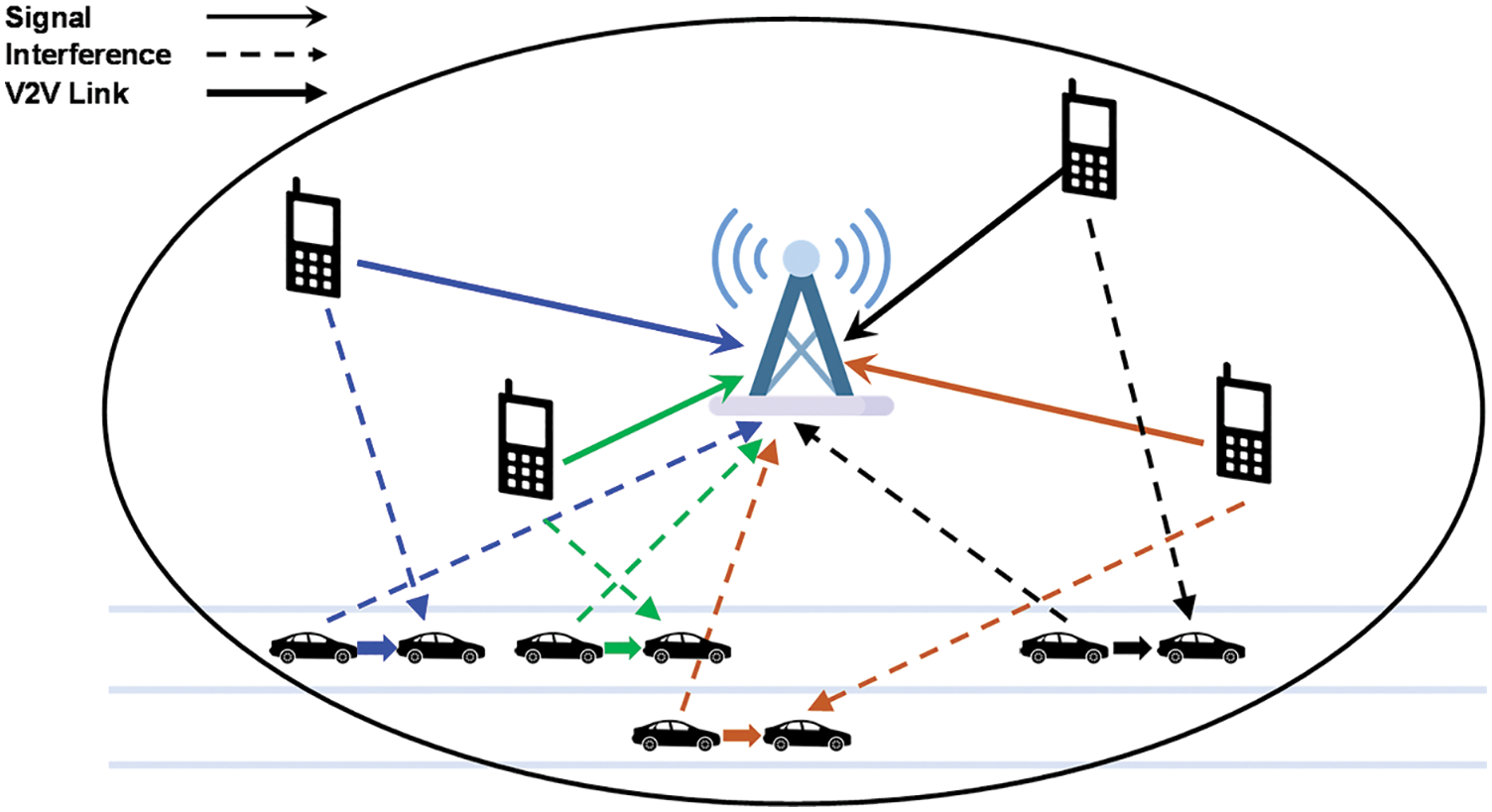
Figure 1: V2V communication in LTE-A [4]
3GPP designed the LTE-A as a major international 4G network standard. The LTE-A can achieve the maximum data rates of 1 Gbps in downlink and 500 Mbps in uplink for mobile users without movement; moreover, it can support up to 100 Mbps during high mobility (e.g., in a high-speed train). In the field of 4G/5G wireless network research, the research on the scheduling of various MAC layer networks has always been the focus of many researchers, such as the research on handover scheduling in heterogeneous mobile networks [5,6] and research on multimode Quality of Service (QoS) guarantee [7–9].
In the 5G wireless network research, the D2D communication is an important research issue. Therefore, the research on D2D resource allocation in LTE-A networks is extensive, including the selection and configuration of radio resources, D2D communication within the signal range of a single eNB, one-to-one or one-to-many resource allocations such as [10–12], and some research mechanisms and decision-making deigns such as [13,14] for the support of iteration, weight values, and QoS. The goal of resource allocation is simply to reduce the burden and congestion of a radio network when many UEs access the same network simultaneously and improve the overall capacity. In [15] focused on D2D communication within the signal range of a single eNB where a convex hull inspired distributed D2D Controller (DDC) was selected. First, the author determined how many DDCs should be placed based on the number of D2D links (D2D link density and location), and different groups used different radio Resource Blocks (RBs). In [16], the research is focused on D2D communication within the signal range of a single eNB, where available RBs were selected for one-to-one pairing when the signal to interference plus noise ratio (SINR) thresholds. In [17], a two-timescale federated Deep Reinforcement Learning (DRL) algorithm is developed to help obtain robust models, the graph theory-based vehicle clustering algorithm is executed for different timescales, and the proposed two-timescale federated DRL algorithm for the activation of the appropriate V2V pairs. Moreover, the resource allocation for V2V link issue is very popular in the LTE-V network. In [18], researchers considered the power consumption issue, the proposed optimization framework shows an improvement in terms of the overall energy efficiency of the LTE-V network, and moreover, it also considers cooperation among vehicles to more efficiently allocate the resources and adjust power-splitting (PS) factors with better performance.
As the V2V resource allocation research issue is very popular in LTE networks, there are many research articles mentioned above it. In [19,20], the LTE V2V resource allocation is similar to that in the present D2D study, which is discussed in some studies [21,22]. The V2V study scenario also combines Road-Side Unit (RSU) resources in Vehicular ad-hoc network (VANET) for hybrid-resource allocation, which is a little different from our research area of single V2V resource environment. In [23,24], these support the vehicles to autonomously predicate to select appropriate radio resources in a distributed LTE-V mode 4 environment. Our research environment is the centralized resource allocation by the eNB as the LTE-V mode 3. In [25], they have a goal to maximize the number of vehicular links while satisfying the QoS for cellular users, and then, the proposed novel scheme for the BS to jointly allocate resources and obtain the maximum number of vehicular links that can be established for a given available bandwidth and cellular user distribution. However, only few studies have considered the period of resource allocation to improve the throughput and reduce the system overhead, which is an important research issue in LTE-V mode-3 network.
3 Methods: Semi Persistent Gain Aware Resource Allocation (SP-GARA) Scheme
In this study, we used vehicles to establish V2V links for D2D communication in LTE-V environment. In the abovementioned resource allocation, the onboard V2V is similar to the D2D technology of LTE-A. In addition to providing better connection quality through LTE, it can transmit with low delay and high transmission rate and provide V2V link services.
In the currently considered LTE-V mode-3 environment, each V2V link uses a dedicated one CUE radio resource based on eNB allocation. In previous studies, the eNB allocated the radio resource only once or every TTI. A one-time resource allocation cannot support the movement of V2V links, but every TTI allocation may reach dynamic behavior with high computing loading for eNB. We assume a gain value in our proposed SP-GARA scheme for eNB with low computing loading and high total system rate.
The proposed scheme uses multiple V2V links that randomly enter the research scenario to simulate V2V links on a highway for data transition. Different cycle lengths are used to determine the timing at which resource allocation should be performed and then a continuous gain value is obtained according to the cycle length to select appropriate CUEs that share spectrum resources. We designed the decision conditions to calculate the gain value obtained from the V2V links in the scenario to help the V2V links select the proper radio resources.
In a continuous-time scenario and a single eNB with signal range, vehicles randomly drive on lanes in the scenario at a constant speed. The signal radius is R, and there are n CUEs with fixed locations. Each CUE is allocated an RB to use and transmit data to the eNB in uplink. At the eNB vertical distance D position, a multilane is present in the same direction, and the vehicles will be paired, which are called V2V links, and enter the scenario randomly. Assume that a V2V in the scenario requires data transmission, and the CUEs use all resources in the original scenario, so the pair of a V2V link and a CUE must share the same radio resources. Furthermore, considering the problem of interference, resources are allocated to V2V link/CUE pairs. The basic concept is that time is continuous and the eNB continuously allocates resources to the V2V links in the scenario at a certain point in time. By selecting the CUE resource that can get the maximum sum rate to pair with, we anticipate to reduce the load of the eNB and increase the overall sum rate. The research scenario is shown in Fig. 1. Considering the blue line as an example, the CUE transmits data to the eNB in uplink, and the eNB allocates resources to the CUE. At this time, the vehicles carrying the blue V2V link use the same resources as the CUE and cause mutual interference. Considering the blue dotted line as an example, the vehicle behind the V2V link causes interference to the eNB, and the CUE causes interference to the vehicle in front.
Our goal is to maximize the overall sum rate with a low burden on the eNB in the long run. In the present studies [26,27], the estimation of the channel quality at a certain time t, the V2Vj and data rate of CUEi in the scenario are defined as
RateV2Vi,j(t)=B∗log2(1+SINRV2Vj) (1)
RateCUEi,j(t)=B∗log2(1+SINRCUEi) (2)
Further, we only consider the CUE and V2V link with reused resources to be included in the calculation range; therefore, the system sum rate is defined as the sum rate of the CUE and V2V link with reused resources. At a certain time t, the system sum rate is expressed as
Ratesys(t)=∑i∑jxi,j(t)∗RateV2Vi,j(t)+∑i∑jxi,j(t)∗RateCUEi,j(t),∀i ε CUE,∀j ε V2V(t). (3)
xi,j(t) : Defined as whether V2V linkj and CUEi are paired at time t.
V2V(t) : Defined as all V2V links in the scenario at time t.
Finally, our goal is to maximize the system sum rate from t = 0 to infinite when considering V2V uses at most one CUE spectrum resource. The equation is expressed as follows:
Maxxi,j(t)[∞∫0Ratesys(t)dt] (4)
Subject to
∑∀j∈V2V(t)xi,j(t)≤1 (5)
xi,j(t)∈{0,1} (6)
xi,j(t) : At time t, whether V2V linkj and CUEi are paired
V2V(t) : At time t, all V2V links in the scenario.
RateCUEi,j(t) : CUE’s data rate when V2V linkj is paired with CUEi at time t.
RateV2Vi,j(t) : V2V’s data rate when V2V linkj is paired with CUEi at time t.
3.2 Cycle of Resource Allocation (TRM)
In our research environment, the first problem to be solved is determining resource allocation for the V2V link that randomly enters the scenario on the same multilane. Assuming that vehicles are traveling at an average speed and their locations change over time, there are two solutions for timing. The first is event-based method, which implies that the eNB will allocate resources when the vehicle just enters. The advantage of this method is that it can allocate resources to new vehicles and consider the V2V links in the scenario, but the disadvantage is that it will affect the timing of the decision based on the time when the vehicle enters the scenario. Random vehicles may cause too frequent or poor resource allocation timings. The second is the time cycle-based method, which allocates resources to the V2V link and CUE in the scenario based on time cycle. The advantage is that the frequency of resource allocation can be adjusted according to different vehicle conditions. In the end, we selected the time cycle-based approach.
We use time as the benchmark for resource allocation to define a parameter TRM to represent the cycle of resource allocation, i.e., how often the remapping action needs to be performed. Fig. 2 shows the time axis represented by TRM, with k from 0 to infinity. When t=T0RM , it implies the start time; when t=TkRM , it represents the time point of the k-th resource allocation.
Whenever a new V2V link enters the scenario, it is represented by t=Tarrival and the intention is to distinguish the V2V link that just entered the coverage of the eNB.
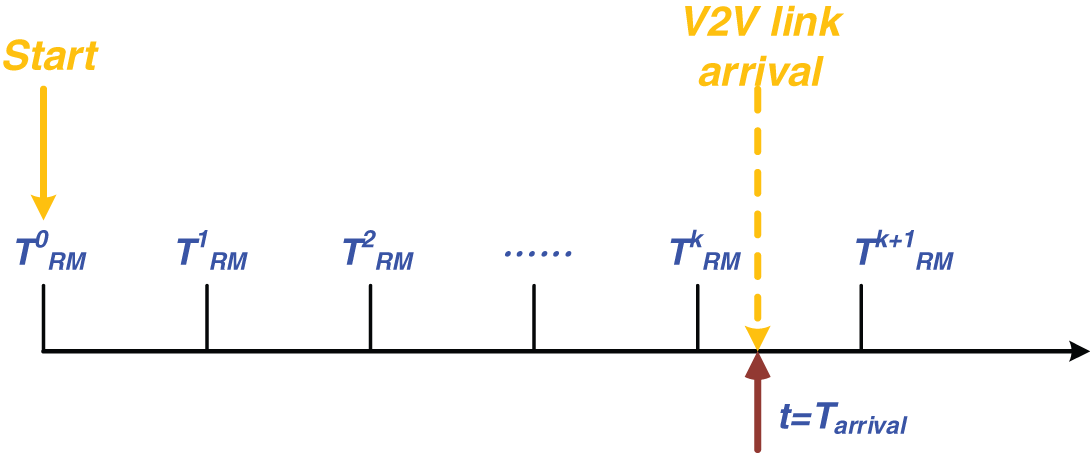
Figure 2: Example of a timeline
We consider using sum rate as the parameter of gain and weight values. Considering that we will use the same pairing format for a time period until the next resource allocation timing point, we will consider the current V2V link location for pairing. The V2V link in the scenario will also move at the speed of the vehicle and finally determine the range of the V2V link from the current position to the position before the point in time when the next resource allocation is performed. Subsequently, we calculate the sum rate that can be obtained during this period as the weight value. When calculating the gain value, two situations are considered: a new V2V entering the scenario and cycle-based resource allocation. The first is when there is a new arrival V2V link ( t=Tarrival ), the calculation range is Tarrival∼Tk+1RM ; the second is when t=TkRM , the calculation range is TkRM∼Tk+1RM .
The scenario considered here is different from the traditional resource allocation methods using system snapshots. Our research is to consider the continuous resource allocation over a time period. In the previous two sections, we have defined the resource allocation time cycle parameter and the weight value of the calculation priority. The following are the steps of the proposed scheme. In our proposed SP-GARA scheme, two situations exist: the first is when a new V2V link enters the scenario, and the second is when the cycle of resource allocation expires.
Case 1: The start time occurs when a new V2V link enters the scenario. At this time, the eNB allocates resources only to the new arrival V2V link as follows:
Step 1: Select CUE as a candidate: Take the timeline of Fig. 2 as an example, when t=Tarrival , a new arrival V2V link enters the scenario at this time, and the eNB should allocate resources to the V2V link. Considering that the CUE that has reused resources initially, when selected by the new arrival V2V link again, it will cause the original pair to break down. Therefore, we use the CUE that has not been reused and put it in the set of AvailableCUE(Tarrival) as a candidate for the new arrival V2V link.
Step 2: Calculate the gain value: the new arrival V2V link will calculate the gain value with all CUEs in AvailableCUE(Tarrival) and use Eq. (7) to form a one-dimensional list among the calculated gain values.
Step 3: V2V link and CUE pairing: From the newly formed list, find maxi{Gaini,j} as the pairing of the new arrival V2V linkj and CUEi.
Gaini,j(t)=∫Tk+1RMTarrivalRateV2Vi,j(t)dt+∫Tk+1RMTarrivalRateCUEi,j(t)dt,i∈∀AvailableCUE(t),j=newarrivalV2Vlink (7)
AvailableCUE(t) : CUE that has not reused resources at time t.
RateV2Vi,j(t) : V2V’s data rate when V2V linkj is paired with CUEi at time t.
RateCUEi,j(t) : CUE’s data rate when V2V linkj is paired with CUEi at time t.
Gaini,j(t) : At time t, the expected data rate when V2V linkj is paired with CUEi.
In Eq. (7), we calculated t=Tarrival∼Tk+1RM . The sum of the V2V and CUE rates is used as the CUE of the resources that are not reused and the gain value of the new arrival V2V link.
Case 2: When the start time is t=TkRM , the eNB will reallocate resources to all V2V links in the scenario. The allocation method is as follows:
Step 1: All CUEs are candidates: Take the timeline of Fig. 2 as an example. When t=TkRM , all V2V links are placed in the set of V2V(TkRM) as V2V links for allocating resources.
Step 2: Calculate the gain value: Use Eq. (8) to calculate the gain value between V2V(TkRM) and CUE, and form a matrix, as shown in Fig. 3.
The equation for calculating the gain value at this time is as follows:
Gaini,j(t)=∫Tk+1RMTkRMRateV2Vi,j(t)dt+∫Tk+1RMTkRMRateCUEi,j(t)dt,i∈∀CUE,j∈∀V2V(t) (8)
V2V(t) : At time t, all V2V links in the scenario.
RateV2Vi,j(t) : V2V’s data rate when V2V linkj is paired with CUEi at time t.
RateCUEi,j(t) : CUE’s data rate when V2V linkj is paired with CUEi at time t.
Gaini,j(t) : At time t, the expected data rate when V2V linkj is paired with CUEi.
In Eq. (8), we calculated the sum of the time between t=TkRM∼Tk+1RM , V2V rate, and CUE rate. The sum is used for the CUE that has not reused resources and the gain value of all V2V links in the scenario at time t.

Figure 3: Gain matrix
Step 3: V2V link and CUE pairing: From the matrix, find maxi,j{Gaini,j} as a priority pairing situation and move CUEi and V2Vj out of the original set.
Step 4: Repeat the steps and return to Step 1, until V2V(TkRM)=∅, and the resource allocation is completed.
In our proposed SP-GARA scheme, the overall scheme algorithm flow is shown in Fig. 4.

Figure 4: Proposed SP-GARA scheme
The environmental performance evaluation uses two codirectional lanes within a single eNB signal range. Randomly distributed CUEs are present within the signal range of the eNB, and multiple vehicles are ready to pass through the same lane of the eNB. The pairings are completed, and V2V link communication is established. Assuming that CUE always has data to transmit, the V2V link also continues to transmit driving data. In the simulation process, the eNB uses a cycle-based resource allocation algorithm for the V2V link to select the spectrum resources of the CUE suitable for the V2V link.
In our performance evaluation, the SP-GARA resource allocation scheme proposed here was compared with the Instantaneous Capacity-based (InsCap-based) and Random schemes. Among them, the definition of InsCap-based scheme is the same resource allocation cycle as the present study to perform resource allocation. The difference is that in the calculation of the weight value, the transmission rate of the V2V link’s location at the current time is used as the weight value instead of the gain value considering the time period as the proposed scheme.
When t = TkRM , the equation for gain value is as follows:
Gaini,j(t)=RateV2Vi,j(t)+RateCUEi,j(t),∀i∈CUE,∀j∈V2V(t) (9)
The random scheme randomly allocates a CUE spectrum resource as a pairing to all V2V links under t = TRM. Other performance evaluation parameters are shown in Tab. 1.

Two performance evaluation parameters for comparing the performance of the three types of vehicle speeds (different vehicle densities) exist. The performance evaluation parameters are introduced as follows:
The first is system sum rate: CUE and V2V link with reused resources are used as the system sum rate from Eqs. (4)–(6). We use the total sum rate obtained via the Shannon equation based on the SINR.
The second is system overhead: We compare the pairing of V2V link and CUE when t=Tk−1RM with the pairing of V2V link and CUE when t=Tk−1RM . When the V2V link pairing situation is different from the previous time, the number of remapping times is calculated once, and this number is regarded as system overhead.
We first observe from the perspective of different vehicle speeds with three resource allocation schemes and explore the impact of varying resource allocation time cycles (TRM) using resource allocation schemes. We also verify through the simulation results of various TRM methods to determine the size of TRM to use for cycle-based resource allocation if needed. Three sizes of resource allocation time cycle TRM = 10, 60, and 110 are used. The number of CUEs is 50, the total number of V2V links is 1000, and the interarrival time for V2V entering the scenario is 5 s. Using these data for comparison, we hope to maximize the system sum rate and then look at the impact of TRM from the perspective of these evaluation parameters.
4.1 Performance of the System Sum Rate
Figs. 5–7 can present the system sum rate with different vehicle speeds. Fig. 5 shows the system sum rate with a vehicle speed of 60 km/h. The horizontal and vertical axes represent time and transmission volume (sum rate), respectively. We have the following observations:
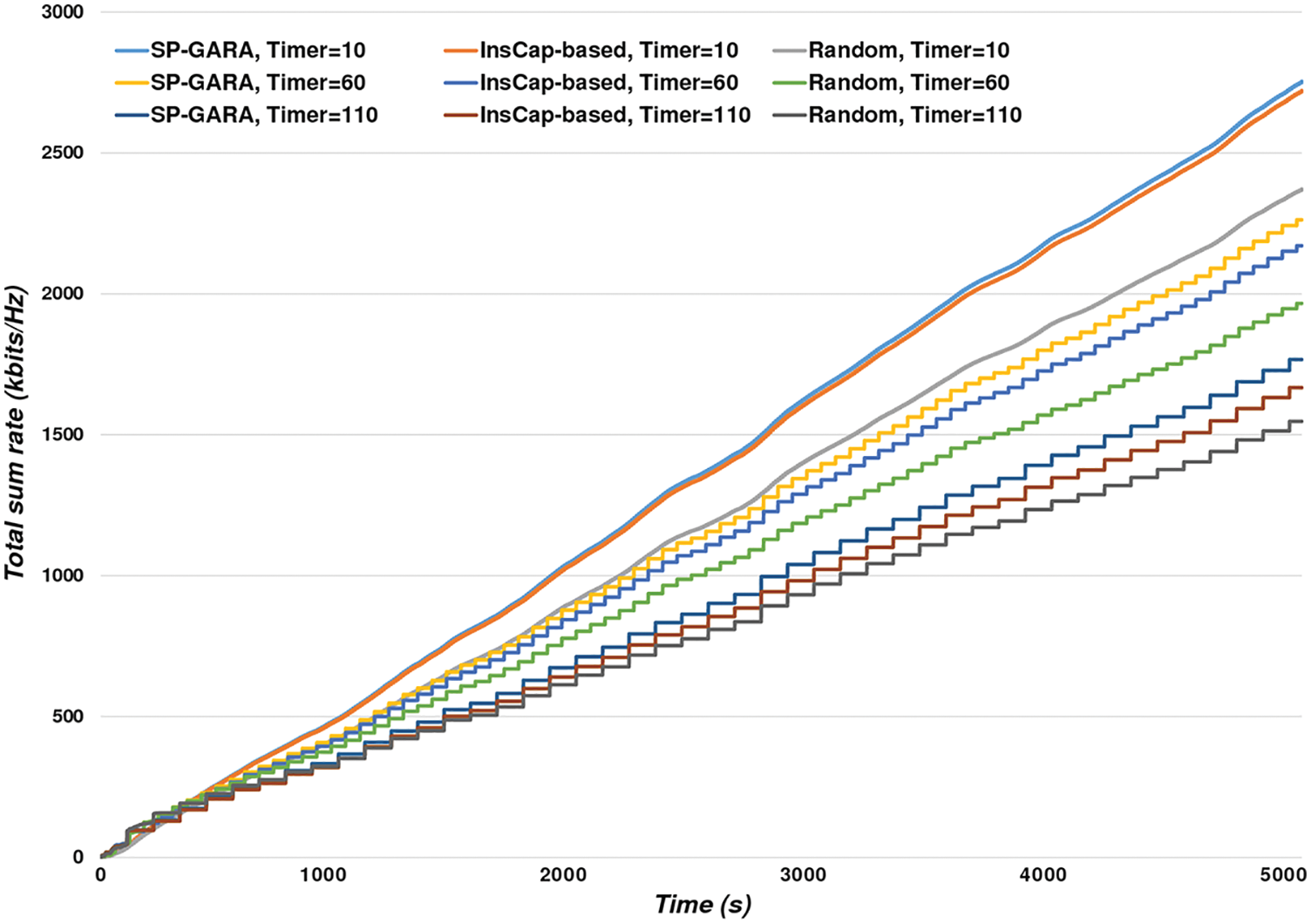
Figure 5: Total sum rate (V2V speed = 60 km/h)
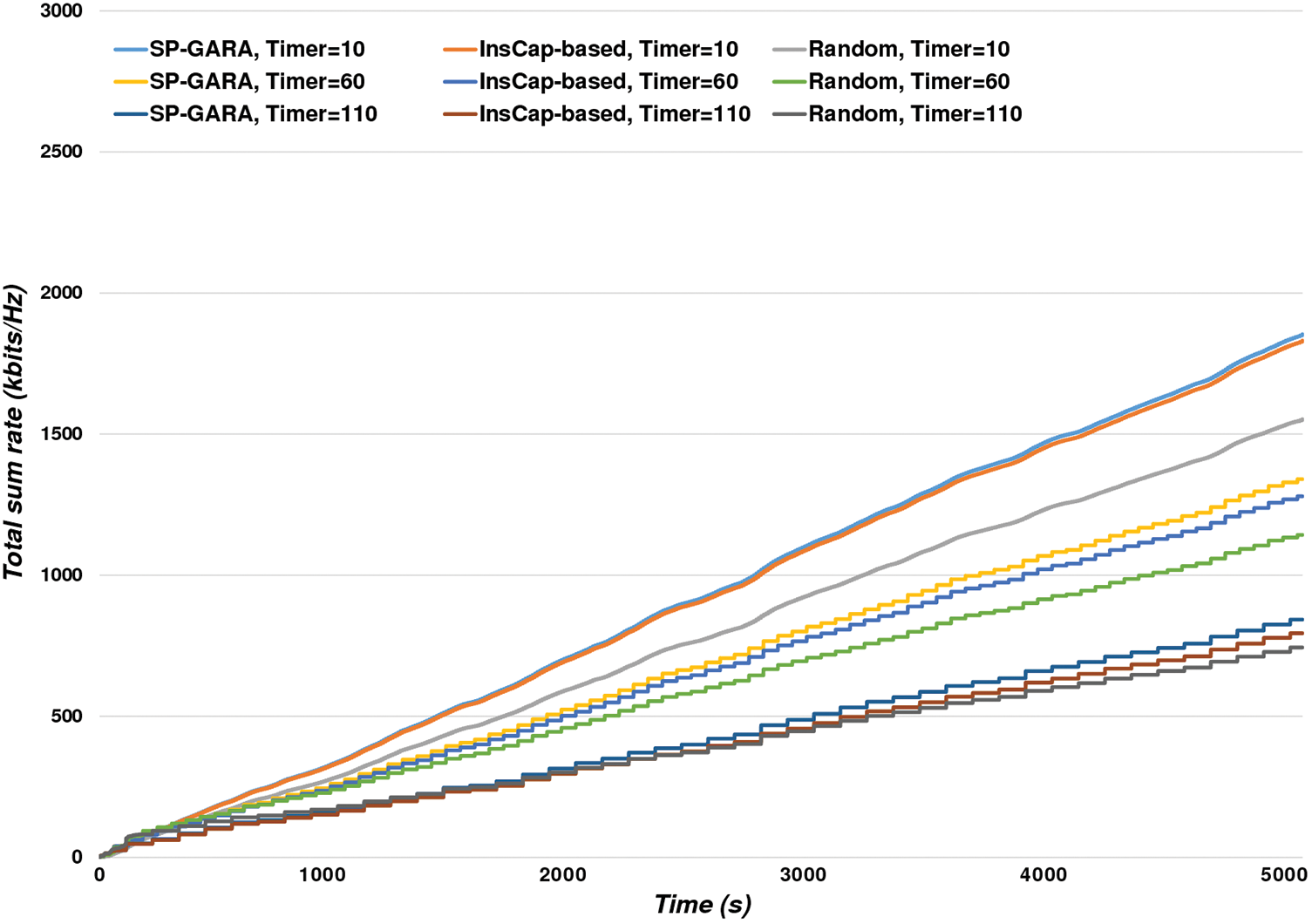
Figure 6: Total sum rate (V2V speed = 90 km/h)
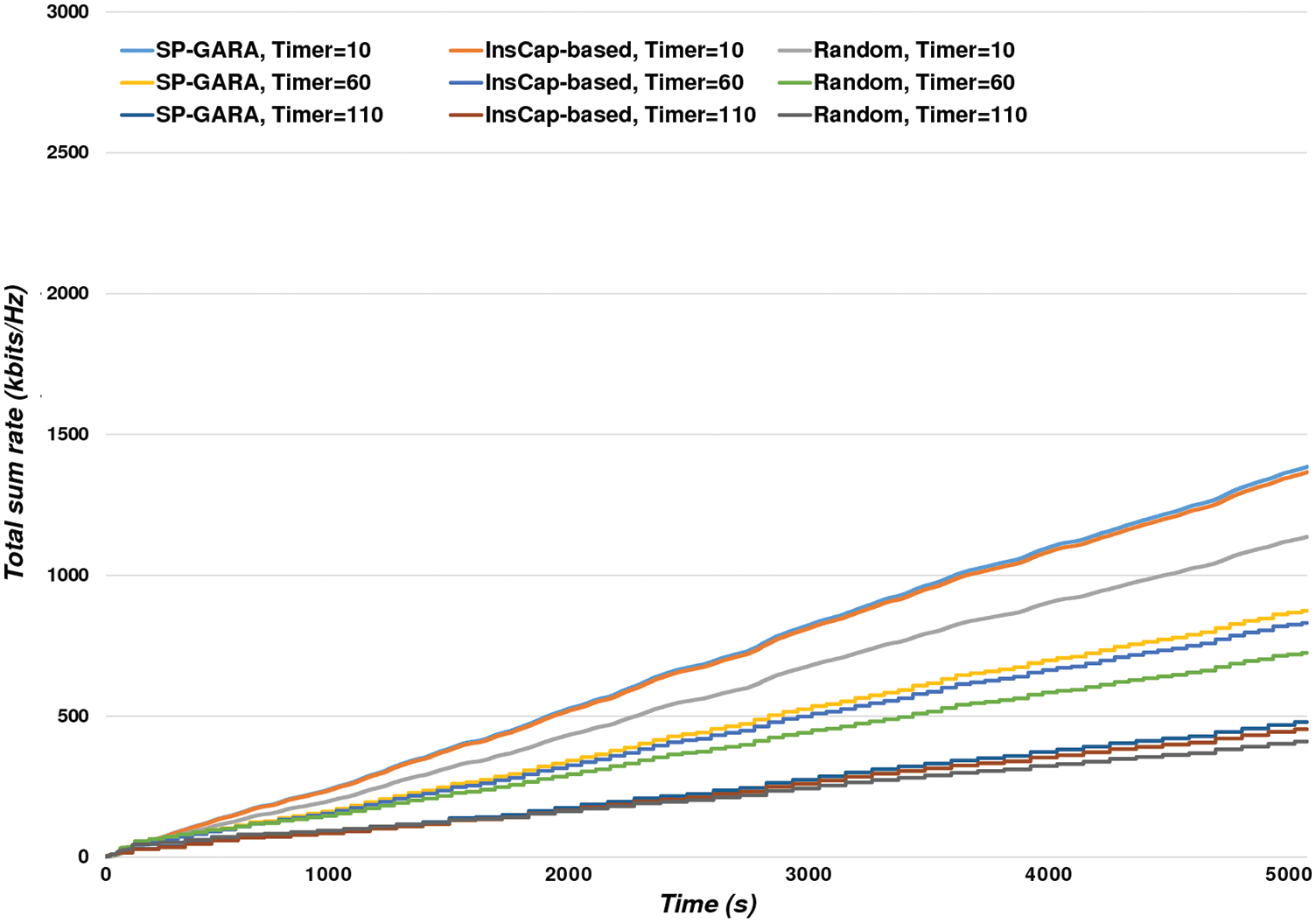
Figure 7: Total sum rate (V2V speed = 120 km/h)
The sum rate increases over time. Thereafter, when Timer(TRM) = 10, the final sum rate is the highest among TRM = 10, 60, and 110. Our proposed SP-GARA performs the best among the three schemes because the smaller the T, the more frequent the resource allocation, which can also make it easier for V2V to pick suitable CUE spectrum resources. Further, in our proposed scheme, compared with the InsCap-based control group, the increase in sum rate is only slightly higher mainly because when the resource allocation time cycle is shorter and the resource allocation is more frequent, the probability of the InsCap-based scheme being able to pick a match similar to the proposed scheme also increases. Compared to the random scheme, it has the worst performance. Furthermore, when TRM = 60, the overall sum rate is the second-highest among the three TRM parameters. At this point, it can be observed that compared to the case of TRM = 10, our proposed scheme is considerably better than the InsCap-based scheme because as the period T increases, we can choose the best matching situation considering the expected sum rate in the future. InsCap-based scheme only chooses the best sum rate pairing at the moment, so our proposed scheme is more for system sum rate than InsCap-based. Finally, when TRM = 110, the overall sum rate is the lowest among the three TRM parameters because the resource allocation cycle is very long, causing few V2V link resource allocations in the eNB. Majorly, the same pairing is used, which leads to the worst performance among TRM = 10, 60, and 110. However, even when TRM = 110, our proposed scheme is still the best.
The results of the three at different speeds are the same. By comparing the three schemes and three different sizes of T, we could draw several observations. First, as the vehicle speed increases (the density of the vehicle is lower), the total system sum rate decreases; the vehicle speed of 120 km/h in Fig. 7 has the lowest total system sum rate. Second, at the same vehicle speed, with the change in TRM from small to large, comparing our proposed and the InsCap-based schemes, when TRM = 10, the advantage is not obvious. The biggest advantage appears when TRM = 60, but when TRM = 110, it slows again. Finally, compared to the random comparison, it is entirely inversely proportional. The smaller the TRM, the better.
4.2 Performance of the System Overhead
In Figs. 8–10, we discuss the system overhead problem of each scheme. At the vehicle speed of 60 km/h in Fig. 8, three schemes are compared, and the total number of remapping in the case of resource allocation period TRM = 10, 60, and 110, as discussed below. We have the following observations:
In each scheme, the larger the TRM, the smaller the total number of remapping and the relationship between the two is inversely proportional. Next, in the random scheme, it typically has the highest total number of remapping because without considering the resource allocation of the V2V link location information, the probability of picking the same pair of CUE spectrum resources with the previous resource allocation is low. In addition, in the InsCap-based scheme, the number of remapping times is similar to that of our proposed algorithm because when the vehicle speed is slow, the relative moving positions are similar. Therefore, the InsCap-based scheme also improves the situation of picking the same pair.
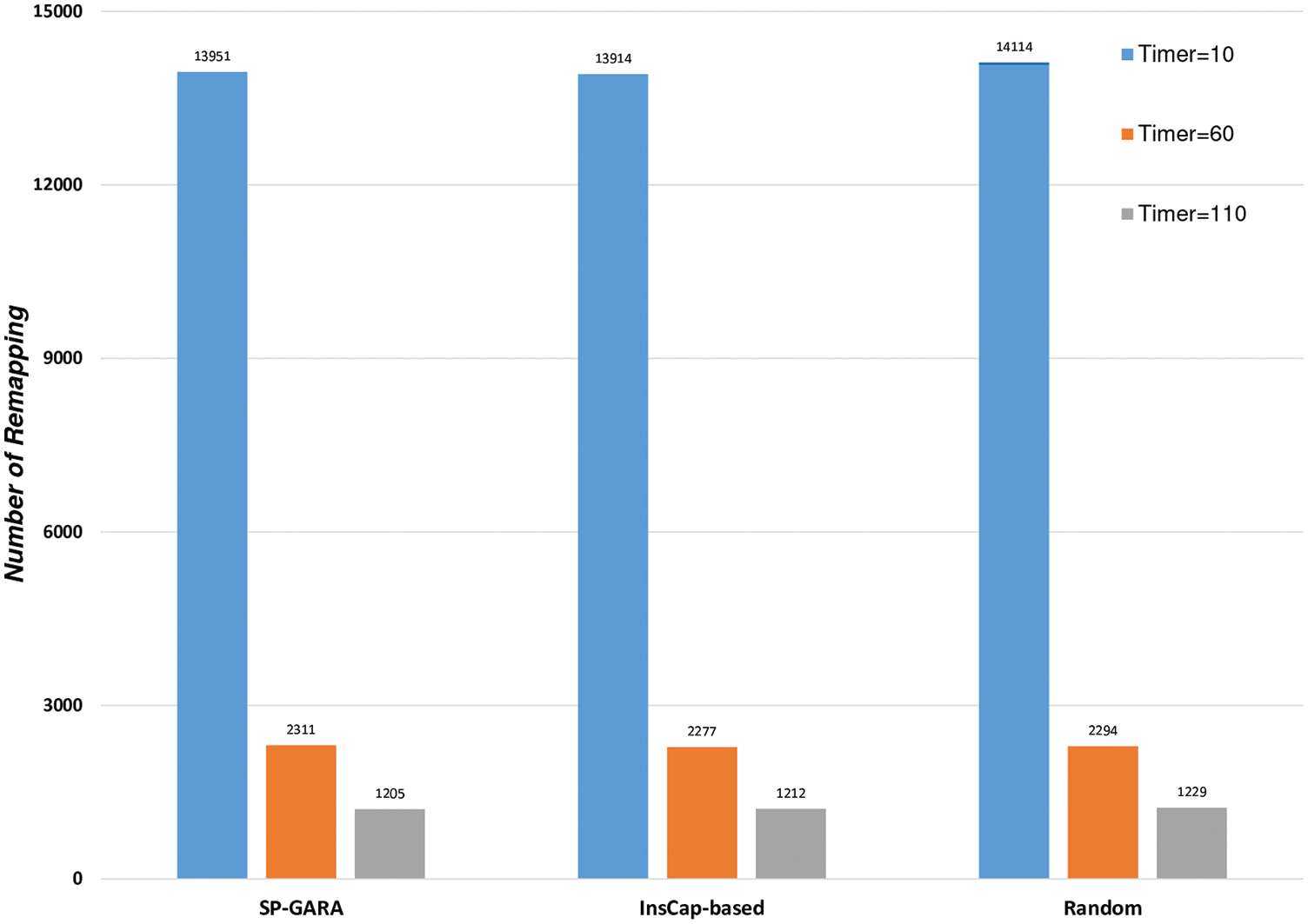
Figure 8: Total number of remapping (V2V speed = 60 km/h)
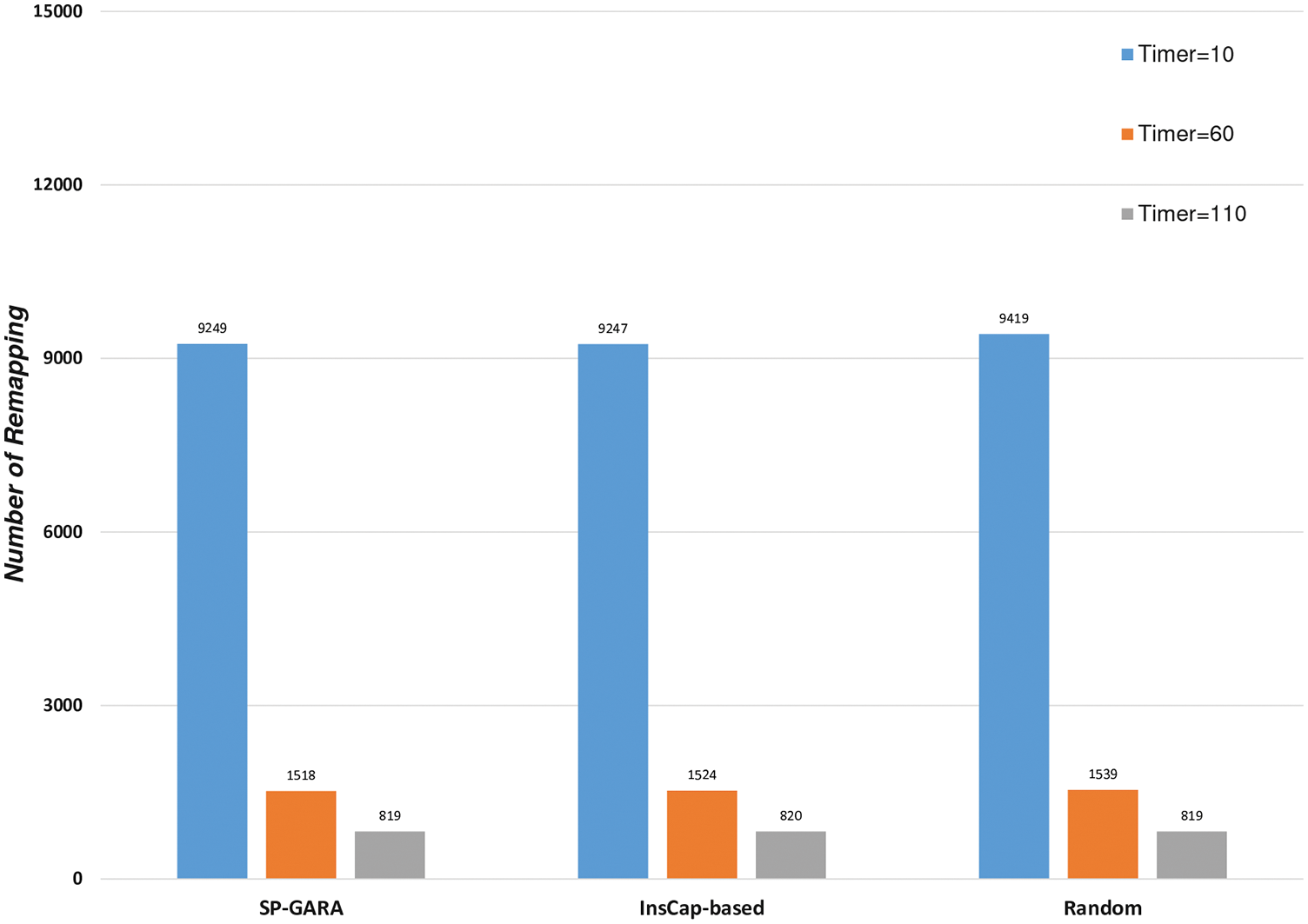
Figure 9: Total number of remapping (V2V speed = 90 km/h)
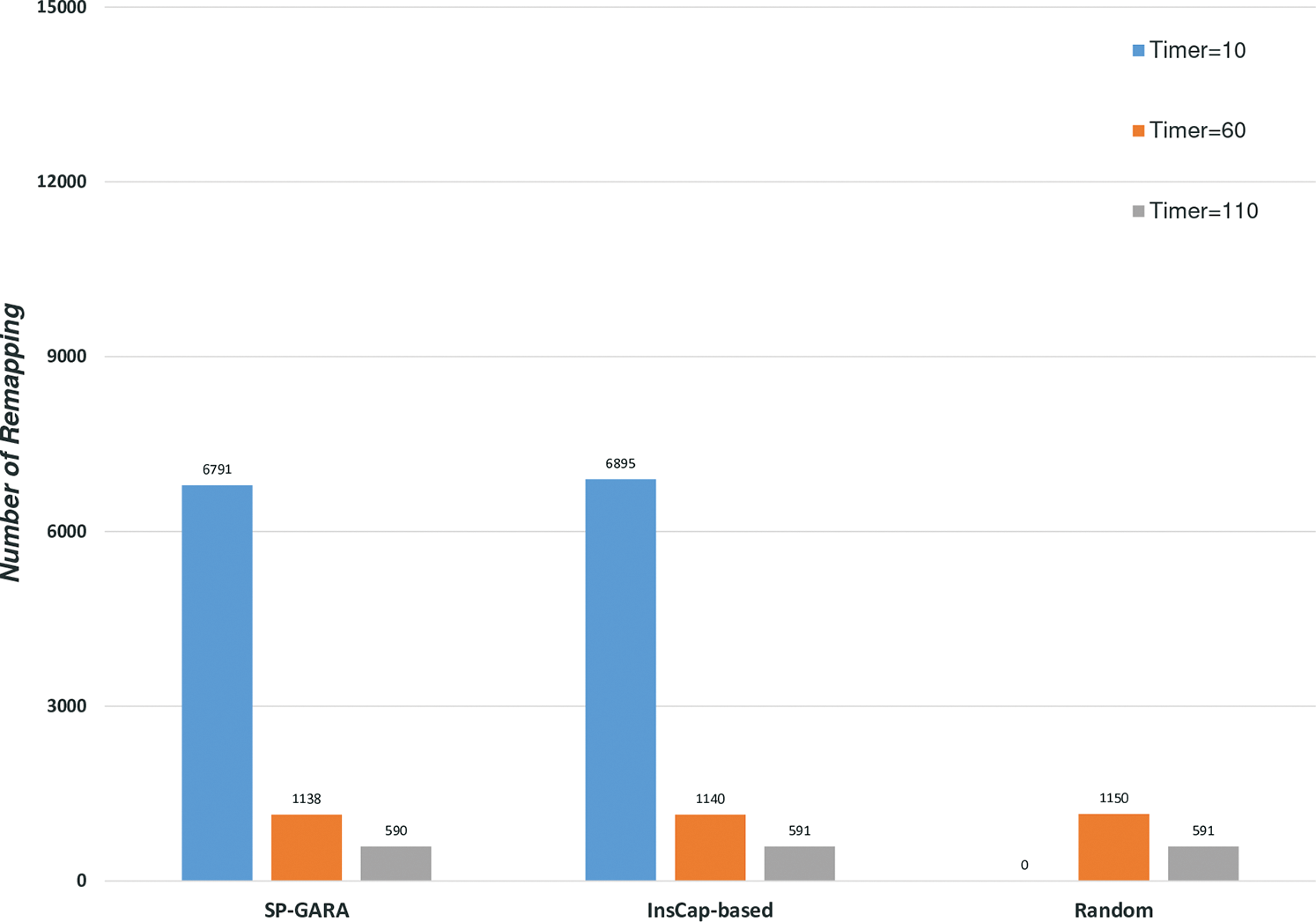
Figure 10: Total number of remapping (V2V speed = 120 km/h)
The results of the three at different speeds are the same. By comparing the three schemes and three different sizes of T, we could show the observations. First, as the vehicle speed increases (the density of the vehicle is lower), the total number of remapping decreases; the vehicle speed of 120 km/h in Fig. 10 has the lowest total number of remapping. Second, the random scheme has the highest value of the system overhead. Finally, for different vehicle speeds, the feature of the system overhead is similar between our proposed scheme and InsCap-based scheme; moreover, our proposed scheme has less numbers of total remapping.
4.3 Discussion Effect of TRM Selection
4.3.1 Distribution of Different TRM
In Fig. 11, we observed each the V2V link sum rate at vehicle speed = 60 km/h in our SP-GARA scheme, the total number of V2V links is 1000, and interarrival time = 5 s. To analyze and show the sum rate of each V2V ID (from 1 to 1000) link for different resource allocation period TRM = 10, 60 and 110. We have a few observations as follows:
First, the different values of TRM might have different rate distribution and the lower resource allocation period TRM has a higher centralized distribution. Besides, the sum rate of different V2V links is between 2300~2500 bits/Hz when TRM = 10. It has a higher sum rate and centralized distribution as lower resource allocation period can have provide the effect of immediate resource allocation. Finally, there are higher differences in the sum rates from V2V links when TRM = 110. The higher resource allocation period cannot provide robustness radio quality, and the variation of V2V link’s sum rate would be increased due to the vehicle’s mobility characteristics.

Figure 11: Sum rate of individual V2V links
4.3.2 Performance Analysis between TRM Selection and Vehicle Speed
In Figs. 12 and 13, our proposed scheme observed vehicle speeds = 60, 90, and 120 km/h, the total number of V2V links is 1000, and interarrival time = 5 s. Using different time cycles of TRM to show the total sum rate as Fig. 12 and the number of remapping times as Fig. 13, the horizontal axis is TRM and the two figures of the vertical axis are the total sum rate and number of remapping times, respectively. We have a few observations as follows:
Irrespective of the vehicle speed being fast or slow, as the TRM becomes more extensive, the total sum rate will show a decreasing trend with a linear decrease. Thereafter, observing the performance of different vehicle speeds in SP-GARA, we found that the slower the vehicle speed, the higher the system sum rate because the greater the number of vehicles simultaneously present in the scenario, the greater the system sum rate that can be generated.
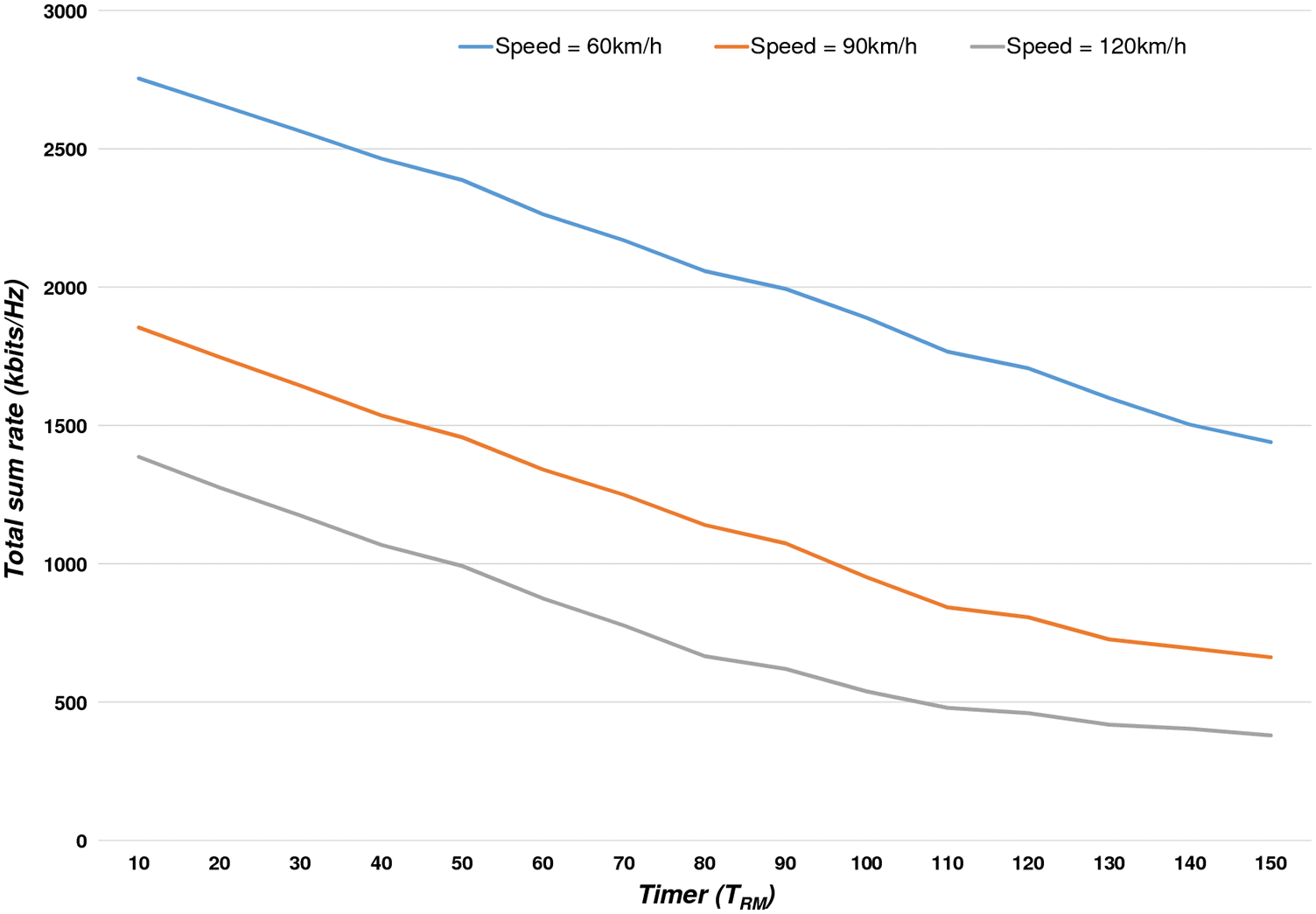
Figure 12: Relation chart between the cycle of resource allocation and total sum rate in the SP-GARA scheme
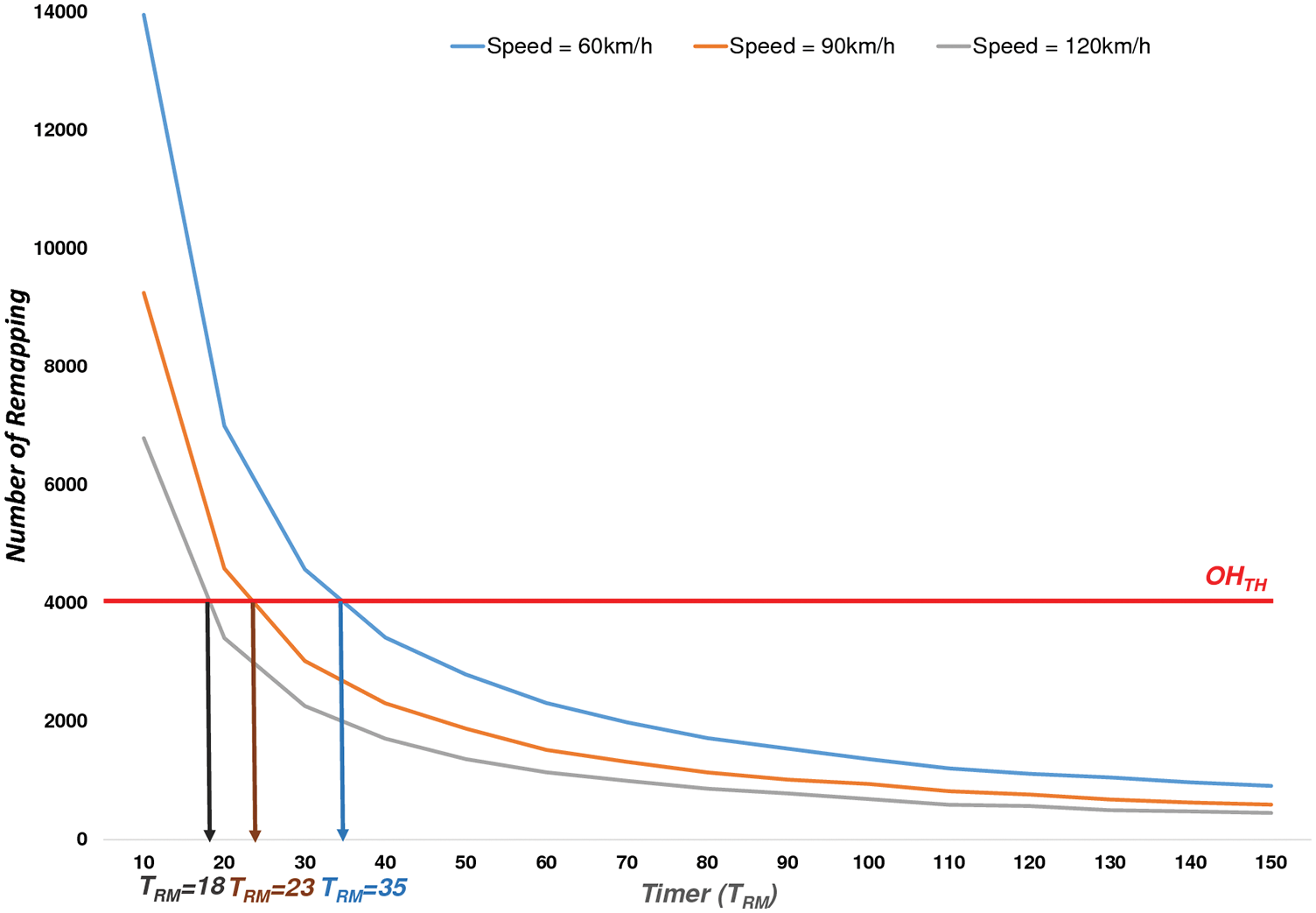
Figure 13: Relation chart between the cycle of resource allocation and number of remapping in the SP-GARA scheme
Irrespective of whether the vehicle speed being fast or slow, as the TRM becomes more extensive, the total number of remapping will show a decreasing trend with an exponential decrease. Thereafter, observing the performance of different vehicle speeds in SP-GARA, we found that the slower the vehicle speed, the higher the system sum rate because the greater the number of vehicles simultaneously present in the scenario, the greater the system sum rate that can be generated. Furthermore, we can set the threshold of the total number of remapping (OHTH) according to different needs. First, we set the threshold value to the appropriate resource allocation period (TRM) to meet the burden of the system TRM. Assuming that we can tolerate a maximum of 4000, as shown in Fig. 13, the x-axis value at the position where the red horizontal line intersects with three different vehicle speeds is the appropriate TRM value.
In the previous Long Term Evolution-Vehicle (LTE-V) scenarios, the vehicle-to-vehicle (V2V) and Cellular User Equipment (CUE) links shared resources were allocated in real time. This paper considered the continuous-time scenario to be close to actual scenarios. By driving the vehicle at a fixed speed in the lane, we designed the Semi Persistent Gain Aware Resource Allocation (SP-GARA) scheme based on TRM, which was mainly calculated using the gain value as the weight value. We adopted this scheme to reuse the appropriate CUE uplink spectrum as the V2V link resource; moreover, the scheme tried to maximize the system sum rate and reduce the system overhead simultaneously. Through simulation experiments, our proposed scheme has better performance than the contrasts of Instantaneous Capacity-based (InsCap-based) and Random. Furthermore, through experimental analysis results, our proposed scheme can dynamically determine the appropriate resource allocation cycle according to different V2V vehicle speeds and system overhead thresholds.
As the speed of driving vehicles vary, the selection value of TRM in our proposed SP-GARA scheme should be reorganized to support. The gain value calculation should also be redesigned to improve the robustness in the future. Moreover, the algorithm of resource allocation might be redefined to support dynamic speed vehicles in LTE-V environment.
Acknowledgement: This work was funded in part by the and Research Project of National Taiwan University of Sport, Taiwan, China, under Grant No. 110DG00114.
Funding Statement: National Taiwan University of Sport, Taiwan, China, under Grant No. 110DG00114.
Conflicts of Interest: The authors declare that there is no conflict of interest in this paper.
References
1. 3GPP, “Study on LTE device to device proximity services: Radio aspects,” Tech. Rep. 3GPP TR 36.843 v12.0.1, 2014. [Google Scholar]
2. 3GPP, “Evolved universal terrestrial radio access (E-UTRAUser equipment (UE) radio transmission and reception,” Tech. Spec. 3GPP TS 36.101 v12.7.0, 2015. [Google Scholar]
3. 3GPP, “Evolved universal terrestrial radio access (E-UTRA) and evolved universal terrestrial radio access network (E-UTRANOverall description; stage 2,” Tech. Spec. 3GPP TS 36.300 v14.3.0, 2017. [Google Scholar]
4. R. Molina-Masegosa and J. Gozalvez, “LTE-V for sidelink 5G V2X vehicular communications: A new 5G technology for short-range vehicle-to-everything communications,” IEEE Vehicular Technology Magazine, vol. 12, no. 4, pp. 30–39, 2017. [Google Scholar]
5. C.-C. Yang, J.-Y. Chen, Y.-T. Mai and Y.-C. Wang, “Delay-sensitive network selection and offloading in LTE-A and Wi-Fi heterogeneous networks,” Journal of Circuits Systems and Computers, vol. 30, no. 7, p. 2150120, 2021. [Google Scholar]
6. Q. You and B. Tang, “Efficient task offloading using particle swarm optimization algorithm in edge computing for industrial internet of things,” Journal of Cloud Computing, vol. 10, no. 41, pp. 1–11, 2021. [Google Scholar]
7. I.-C. Chang and Y.-T. Mai, “The end-to-end QoS guarantee framework for interworking WiMAX PMP and mesh networks with Internet,” Computers and Electrical Engineering, vol. 39, no. 6, pp. 1905–1934, 2013. [Google Scholar]
8. I. Ahmad, J. Jang and K. Chang, “QoS priority-based mobile personal cell deployment with load balancing for interference reduction between users on coexisting public safety and railway LTE networks,” Electronics, vol. 9, no. 2136, pp. 1–13, 2020. [Google Scholar]
9. S. P. Kumar, S. A. Balamurugan and S. Kannan, “Hybridized model with activity load adjusting and QoS for Wi-Fi network system,” Intelligent Automation & Soft Computing, vol. 27, no. 2, pp. 333–346, 2021. [Google Scholar]
10. F. Chiti, D. Di Giacomo, R. Fantacci and L. Pierucci, “Interference aware approach for D2D communications,” in Proc. 2016 IEEE Int. Conf. on Communications (ICC), Kuala Lumpur, pp. 1–6, 2016. [Google Scholar]
11. I. Mondal, A. Neogi, P. Chaporkar and A. Karandikar, “Bipartite graph based proportional fair resource allocation for D2D communication,” in Proc. 2017 IEEE Wireless Communications and Networking Conf. (WCNC), San Francisco, CA, pp. 1–6, 2017. [Google Scholar]
12. T. Ahmad, I. Khan, A. Irshad, S. Ahmad, A. T. Soliman et al., “Spark spectrum allocation for D2D communication in cellular networks,” Computers, Materials & Continua, vol. 70, no. 3, pp. 6381–6394, 2022. [Google Scholar]
13. C. Brady and S. Roy, “A robust algorithm for LTE D2D (Sidelink) discovery for public safety communications,” IEEE Systems Journal, pp. 1–12, 2021. https://ieeexplore.ieee.org/document/9480605. [Google Scholar]
14. F. N. Al-Wesabi, I. Khan, S. L. Mohammed, H. F. Jameel, M. Alamgeer et al., “Optimal resource allocation method for device-to-device communication in 5G networks,” Computers, Materials & Continua, vol. 71, no. 1, pp. 1–15, 2022. [Google Scholar]
15. N. Kumar, S. N. Swain and C. S. R. Murthy, “Convex hull inspired distributed controller placement for assisting D2D transfers in LTE-A networks,” in Proc. 2017 IEEE Wireless Communications and Networking Conf. (WCNC), San Francisco, CA, pp. 1–6, 2017. [Google Scholar]
16. P. Zhao, P. Yu, L. Feng, W. Li and X. Qiu, “Gain-aware joint uplink-downlink resource allocation for device-to-device communications,” in Proc. 2017 IEEE 85th Vehicular Technology Conf. (VTC Spring), Sydney, NSW, pp. 1–5, 2017. [Google Scholar]
17. X. Zhang, M. Peng, S. Yan and Y. Sun, “Deep-reinforcement-learning-based mode selection and resource allocation for cellular V2X communications,” IEEE Internet of Things Journal, vol. 7, no. 7, pp. 6380–6391, 2020. [Google Scholar]
18. F. Jameel, W. U. Khan, N. Kumar and R. Jäntti, “Efficient power-splitting and resource allocation for cellular V2X communications,” IEEE Transactions on Intelligent Transportation Systems, vol. 22, no. 6, pp. 3547–3556, 2021. [Google Scholar]
19. A. Arora, A. Mehra and K. K. Mishra, “Vehicle to Vehicle (V2V) VANET based analysis on waiting time and performance in LTE network,” in Proc. 2019 3rd Int. Conf. on Trends in Electronics and Informatics (ICOEI), Tirunelveli, India, pp. 482–489, 2019. [Google Scholar]
20. H. H. Hussein, M. H. Radwan, H. A. Elsayed and S. M. Abd El-Kader, “Multi V2X channels resource allocation algorithms for D2D 5G network performance enhancement,” Vehicular Communications, vol. 31, pp. 100371, 2021. [Google Scholar]
21. H. H. Hussein, H. A. Elsayed and S. M. Abd El-kader, “Intensive benchmarking of D2D communication over 5G cellular networks: Prototype, integrated features, challenges, and main applications,” Wireless Networks, vol. 26, no. 5, pp. 3183–3202, 2020. [Google Scholar]
22. H. H. Hussein, H. A. Elsayed and S. M. Abd El-kader, “Enabling device-to-device technology in 5G heterogeneous networks,” Fundamental and Supportive Technologies for 5G Mobile Networks, pp. 1–26, 2020. [Google Scholar]
23. A. Hajrasouliha and B. S. Ghahfarokhi, “Dynamic geo-based resource selection in LTE-V2V communications using vehicle trajectory prediction,” Computer Communications, vol. 177, no. 7, pp. 239–254, 2021. [Google Scholar]
24. J. Yin and S.-H. Hwang, “Adaptive sensing-based semipersistent scheduling with channel-state-information-aided reselection probability for LTE-V2V,” ICT Express, vol. 14, no. 6, p. 122, 2021. [Google Scholar]
25. R. Aslani, E. Saberinia and M. Rasti, “Resource allocation for cellular V2X networks mode-3 with underlay approach in LTE-V standard,” IEEE Transactions on Vehicular Technology, vol. 69, no. 8, pp. 8601–8612, 2020. [Google Scholar]
26. A. S. Hamza, S. S. Khalifa, H. S. Hamza and K. Elsayed, “A survey on inter-cell interference coordination techniques in OFDMA-based cellular networks,” IEEE Communications Surveys & Tutorials, vol. 15, no. 4, pp. 1642–1670, 2013. [Google Scholar]
27. W.-K. Lai, Y.-C. Wang, H.-C. Lin and J.-W. Li, “Efficient resource allocation and power control for LTE-A D2D communication with pure D2D model,” IEEE Transactions on Vehicular Technology, vol. 69, no. 3, pp. 3202–3216, 2020. [Google Scholar]
Cite This Article
 Copyright © 2023 The Author(s). Published by Tech Science Press.
Copyright © 2023 The Author(s). Published by Tech Science Press.This work is licensed under a Creative Commons Attribution 4.0 International License , which permits unrestricted use, distribution, and reproduction in any medium, provided the original work is properly cited.


 Submit a Paper
Submit a Paper Propose a Special lssue
Propose a Special lssue View Full Text
View Full Text Download PDF
Download PDF Downloads
Downloads
 Citation Tools
Citation Tools
